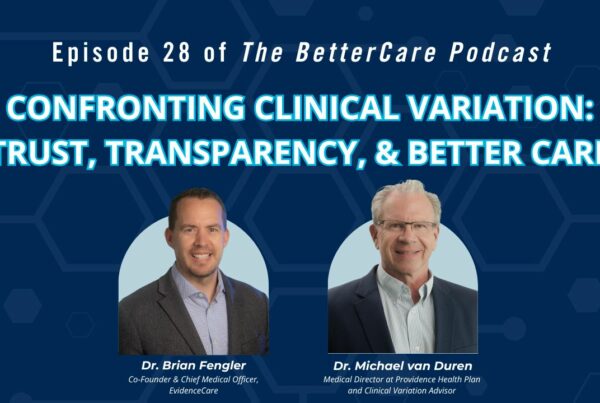The problem with bed status determinations
It’s a known issue that admitting physicians must make the often difficult and confusing decision to admit a patient to either observation or inpatient care. This is also known as making a bed status determination.
The reason the bed status decision is so difficult is because physicians must understand three sets of guidance that are often complex and can change:
- Policy from The Centers for Medicare & Medicaid Services (CMS)
- Evidence-based guideline organizations
- Proprietary insurance policies
CMS publishes a lot of guidance on making bed status determinations, which are published in the Medicare Claims Processing Manual and the Medicare Benefit Policy Manual. There is ambiguity around what CMS policy calls the “two-midnight rule” which states, “hospital inpatient admissions are considered reasonable and necessary for patients whose stays cross two midnights…”
There are instances when a less than two-midnight stay may qualify for inpatient status as long as the documentation in the medical record supports it. But this only adds to the difficulty of the admission decision because it’s not always reasonable for a physician to attest how long a patient will need to stay in the hospital at the onset of care.
To help with this issue, organizations exist to provide evidence-based guidelines that hospitals and insurance companies can use to be on the same page. But those guidelines weren’t taught to admitting physicians during their medical training, and they don’t have additional time to memorize new documentation for ever-changing guidelines.
As Medical Director & ER Physician at Mercy Health West Hospital, Dr. Robert Blankenship, puts it, “We get taught who should be put in the hospital. We have no education about who should be admitted, who should be observed… and it’s constantly changing.”
The downstream effects of incorrect bed status determinations
When physicians are on the fence about which status to choose, observation is often the default. This increase in defaulting to observation care disrupts the workflows of ER physicians and hospitalists and contributes to higher out of pocket costs for patients and less reimbursement for the hospitals.
With physicians not having the right bed status criteria at the point-of-care, the downstream effects are 1) the Utilization Review and Case Management teams not having the documentation needed to justify the bed status and 2) Revenue Cycle teams dealing with reduced revenue and denials.
This is why many hospitals and insurance companies hire third-party companies to focus on secondary reviews, adding to the growing cost of ambiguous criteria and clinical rework.
It’s estimated that there is $13.3 billion of lost revenue every year due to inappropriate bed status determinations.
Bed Status EHR Technology for Admitting Physicians
While utilization review, physician advisory, and denial management services are all helpful in resolving bed status issues, they’re also retrospective. Much of the time and effort of these services are spent on ED admissions with status issues, which takes away from a better use of these clinical resources.
What if there was technology that gave admitting physicians the criteria needed to determine the correct bed status at the point-of-care?
That’s exactly why EvidenceCare created AdmissionCare, which puts the criteria for bed status determinations directly into the EHR and gives physicians the documentation needed to get it right from the beginning.
With a clinical decision support software like AdmissionCare, physicians are better equipped to make the correct bed status determination and provide compliant documentation, which reduces workflow interruptions and downstream rework.
Patients are happier because physicians can more clearly provide an observation vs inpatient determination, and the positive financial impact to both the patient and the hospital is significant when physicians have the documentation to support determination.
Read the full case study on the impact of AdmissionCare at Bon Secours Mercy Health.
“AdmissionCare improves the relationship between ER Physicians and Hospitalists, causes less stress and friction, and results in much fewer denials on the back-end,” said Dr. Jamelle Bowers, Hospitalist at Mercy Health West Hospital.









